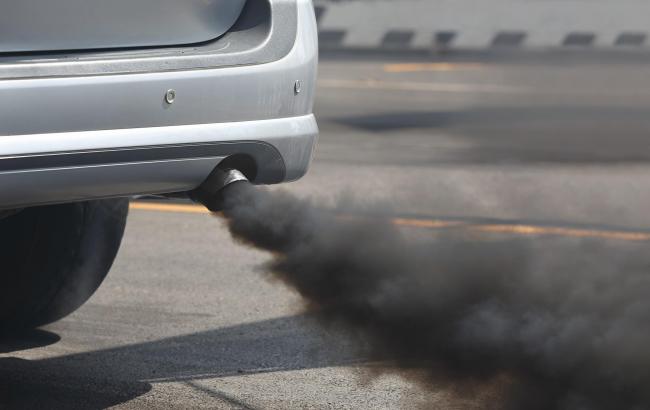
WINCHESTER is among the worst performing districts in the country for reducing carbon emissions, according to a new report.
The news comes despite emissions across the Winchester district falling in recent years.
The report, produced by Winchester climate change group WinACC, shows that in 2016 the district’s emissions had fallen 24 per cent relative to 2004.
However, it states that since 2013 emissions from road vehicles have risen steadily, now making up 43 per cent of the district’s emissions.
 Air pollution from vehicle exhaust pipe on road..
Air pollution from vehicle exhaust pipe on road..
It adds: “Winchester district lies in the worst performing 100 of the 391 local authority areas in the UK on the basis of their reduction in CO2 emissions since 2005.
“In 2016, per capita total energy in Winchester district exceeded that in five adjacent local authority areas by at least ten per cent. Specifically residents and businesses in Winchester District used over 50 per cent more energy than in Eastleigh borough.”
WinACC executive director Tom Brenan said: “This report, coming hot on the heels of the recent IPCC report, indicates both the necessity and the opportunity for urgent action to reduce our emissions.
“This will require all of us, across the community, business and public sectors, to play our part to help limit the damaging impacts of climate change. WinACC will be continuing our work to support change at a local level.”
As reported nationally, the urgency was emphasised by a recent Intergovernmental Panel on Climate Change (IPCC) report, which stated that to limit global warming to a relatively safe level, emissions of carbon dioxide need to fall by about 45 per cent from 2010 levels by 2030.
According to the report, residents in Hampshire are already seeing the damage done to crops through a lack of water, to infrastructure from flooding, and to coastal areas by the combination of storms and rising sea levels as a result of climate change.
Responding, a city council spokesman said: “Addressing CO2 emissions is a collective responsibility and the council is leading by example by introducing measures designed to achieving a 20% reduction by 2020/21.
 Stock photo
Stock photo
The latest data covers 2016/17 and shows that our carbon footprint represented a 9.1% reduction on the previous year and is some 22.5% below the baseline year of 2009/10.
“This illustrates that the council is making good progress in reducing its carbon footprint. There is however, more work to do. The emerging Winchester Movement Strategy will identify long-term solutions to reducing traffic in the city centre.
“In the meantime, we have introduced a number of measures to effect change in the city centre, such as introducing Euro 6 engines on the vast majority of buses together with a new fleet of refuse vehicles that are more environmentally friendly.
“The wider district presents more of a challenge, not least because we live in an area which has a strong economy with an increasing population and these factors are not conducive to reducing overall emissions.
However, we are influencing these wider emissions through measures such as supporting the generation of green energy by giving planning permission for a number of solar farms in line with policies set out in our adopted Local Plan.”
Since it was published the government has warned four Hampshire districts to improve air quality levels or face being fined, although Winchester was not among them.
The four are Basingstoke, Fareham, New Forest and Rushmoor.



Comments: Our rules
We want our comments to be a lively and valuable part of our community - a place where readers can debate and engage with the most important local issues. The ability to comment on our stories is a privilege, not a right, however, and that privilege may be withdrawn if it is abused or misused.
Please report any comments that break our rules.
Read the rules hereLast Updated:
Report this comment Cancel